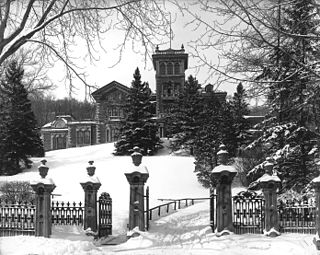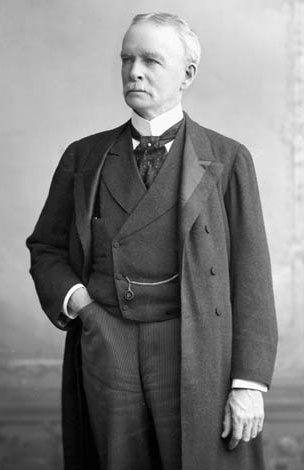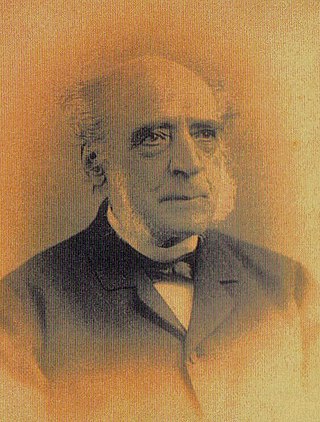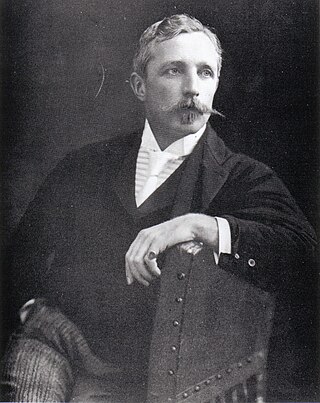
Notre-Dame-de-Grâce, commonly known as NDG, is a residential neighbourhood of Montreal in the city's West End, with a population of 166,520 (2016). An independent municipality until annexed by the City of Montreal in 1910, NDG is today one half of the borough of Côte-des-Neiges–Notre-Dame-de-Grâce. It comprises two wards, Loyola to the west and Notre-Dame-de-Grâce to the east. NDG is bordered by four independent enclaves; its eastern border is shared with the City of Westmount, Quebec, to the north and west it is bordered by the cities of Montreal West, Hampstead and Côte-Saint-Luc. NDG plays a pivotal role in serving as the commercial and cultural hub for Montreal's predominantly English-speaking West End, with Sherbrooke Street West running the length of the community as the main commercial artery. The community is roughly bounded by Claremont Avenue to the east, Côte-Saint-Luc Road to the north, Brock Avenue in the west, and Highway 20 and the Saint-Jacques Escarpment to the south.

Mount Royal Cemetery is a 165-acre (67 ha) terraced cemetery on the north slope of Mount Royal in the borough of Outremont in Montreal, Quebec, Canada. It opened in 1852. Temple Emanu-El Cemetery, a Reform Judaism burial ground, is within the Mount Royal grounds. The burial ground shares the mountain with the much larger adjacent Roman Catholic cemetery, Notre Dame des Neiges Cemetery, and the Shaar Hashomayim Cemetery, an Ashkenazi Jewish cemetery. Mount Royal Cemetery is bordered on the southeast by Mount Royal Park, on the west by Notre-Dame-des-Neiges Cemetery, and on the north by Shaar Hashomayim Cemetery.

The McCord Stewart Museum, formerly known as the McCord Museum of Canadian History, is a public research and teaching museum. The Museum’s Archives, Documentary Art, Dress, Fashion and Textiles, Indigenous Cultures, Material Culture and Photography collections, containing 2.5 million images, objects, documents and works of art, position it as the custodian of a remarkable historical heritage. It is located directly across the street from McGill University, in the downtown core of Montreal, Quebec, Canada.

The Golden Square Mile, also known as the Square Mile, is the nostalgic name given to an urban neighbourhood developed principally between 1850 and 1930 at the foot of Mount Royal, in the west-central section of downtown Montreal in Quebec, Canada. The name 'Square Mile' has been used to refer to the area since the 1930s; prior to that, the neighbourhood was known as 'New Town' or 'Uptown'. The addition of 'Golden' was coined by Montreal journalist Charlie Lazarus, and the name has connections to contemporary real estate developments, as the historical delimitations of the Golden Square Mile overlap with Montreal's contemporary central business district.

Richard Bladworth Angus was a Scottish-Canadian banker, financier, and philanthropist. He was a co-founder and vice-president of the Canadian Pacific Railway, president of the Bank of Montreal, president of the Royal Victoria Hospital, Montreal, president of the Montreal Art Association, and co-founder and president of the Mount Royal Club. He was the natural successor to Lord Mount Stephen as president of the Canadian Pacific Railway in 1888, but he did not desire the position; he twice refused a knighthood. The CPR Angus Shops were named for him, as was one of the later CP Ships.

Sir George Alexander Drummond, was a Scottish-Canadian businessman and senator.

Sir William Collis Meredith, was Chief Justice of the Superior Court for the Province of Quebec from 1866 to 1884. In 1844, he was offered but refused the positions of Solicitor General of Canada and then Attorney-General for Canada East - the latter position he turned down again in 1847. In 1887, he was one of the two English-speaking candidates considered by the Liberals for the role of Lieutenant Governor of Quebec. The home he commissioned and lived in at Montreal from 1845 to 1849 still stands today, known as the Notman House.

Charles Meredith was a Canadian businessman. He was president of the Montreal Stock Exchange and president of C. Meredith & Co., Montreal's leading brokerage firm in the early 20th century. He was a co-founder of the Mount Royal Club, and he had owned the land on which the Ritz-Carlton Hotel in Montreal was built, becoming a principal shareholder with a significant influence on its image and future. His mansion in Montreal's Golden Square Mile, now known as Charles Meredith House, is currently part of McGill University.

Frederick Edmund Meredith was a Canadian lawyer and businessman. He was the 8th Chancellor of Bishop's University; President of the Mount Royal Club; Bâtonnier of the Bar of Montreal; President of the Montreal Victorias for three of their Stanley Cup championships in the late 1890s, and Chief Counsel to the CPR at the inquest into the sinking of RMS Empress of Ireland.

Sherbrooke Street is a major east–west artery and at 31.3 kilometres (19.4 mi) in length, is the second longest street on the Island of Montreal, Canada. The street begins in the town of Montreal West and ends on the extreme tip of the island in Pointe-aux-Trembles, intersecting Gouin Boulevard and joining up with Notre-Dame Street. East of Cavendish Boulevard this road is part of Quebec Route 138.

Peel Street (officially in French: rue Peel) is a major north–south street located in downtown Montreal, Quebec, Canada. The Street links Pine Avenue, near Mount Royal, in the north and Smith Street, in the Southwest borough, in the south. The street's southern end is at the Peel Basin of the Lachine Canal. The street runs through Montreal's shopping district. The Peel Metro station is named for the street.

Drummond Street is a north–south street located in downtown Montreal, Quebec, Canada. Spanning a total of 1.2 kilometres, it links Doctor Penfield Avenue in the north and De la Gauchetière Street in the south.
Charles Sandwith Campbell, (1858–1923) was a wealthy corporate lawyer and benefactor who gave the City of Montreal the Campbell Concerts and Campbell Parks. He was a Governor of McGill University.
The timeline of Montreal history is a chronology of significant events in the history of Montreal, Canada's second-most populated city, with about 3.5 million residents in 2018, and the fourth-largest French-speaking city in the world.

Maison Alcan is a building complex located on Sherbrooke Street in the Golden Square Mile district of Montreal, Canada. The complex was used to house the world headquarters for Alcan, now part of Rio Tinto Alcan, until 2015. Completed in 1983, the complex's integration of new construction with restored or renovated buildings marked a turning point in corporate Montreal's approach to development.

The Mount Stephen Club was a private members' club in Montreal, Quebec. It was founded in 1926 as a gentlemen's club for businessmen by mining magnate Noah Timmins, J.H. Maher and J.S. Dohan.

Lady Meredith House, also known as the H. Vincent Meredith Residence, is a historic mansion located at 1110 Pine Avenue West on the corner of Peel Street, in what is today known as the Golden Square Mile of Montreal, Quebec. It was originally named Ardvarna and is now owned by McGill University. The building was designated as a National Historic Site of Canada on November 16, 1990. The house is situated at an altitude of 129 m.

The McCall MacBain Arts Building is a landmark building located at 853 Sherbrooke Street West in Montreal, Quebec, in the centre of McGill University's downtown campus. The Arts Building is the oldest existing building on campus, and it was designed in the Classical Revival style by John Ostell. Construction began in 1839, and the building's central block and east wing were completed in 1843. The west and north wings were finished in 1861 and 1925, respectively, after involving multiple architects, including Alexander Francis Dunlop and Harold Lea Fetherstonhaugh. Today, the Arts Building is made up of a central block and three distinct wings – Dawson Hall (east), Molson Hall (west) and Moyse Hall (north). The building currently houses the Department of French Language and Literature, the Department of English, and the Department of Art History and Communication Studies. It also hosts lectures for several other departments from the Faculty of Arts.

Pointe-aux-Prairies Nature Park is a large nature park in the Rivière-des-Prairies–Pointe-aux-Trembles borough of Montreal, Quebec, Canada.





















